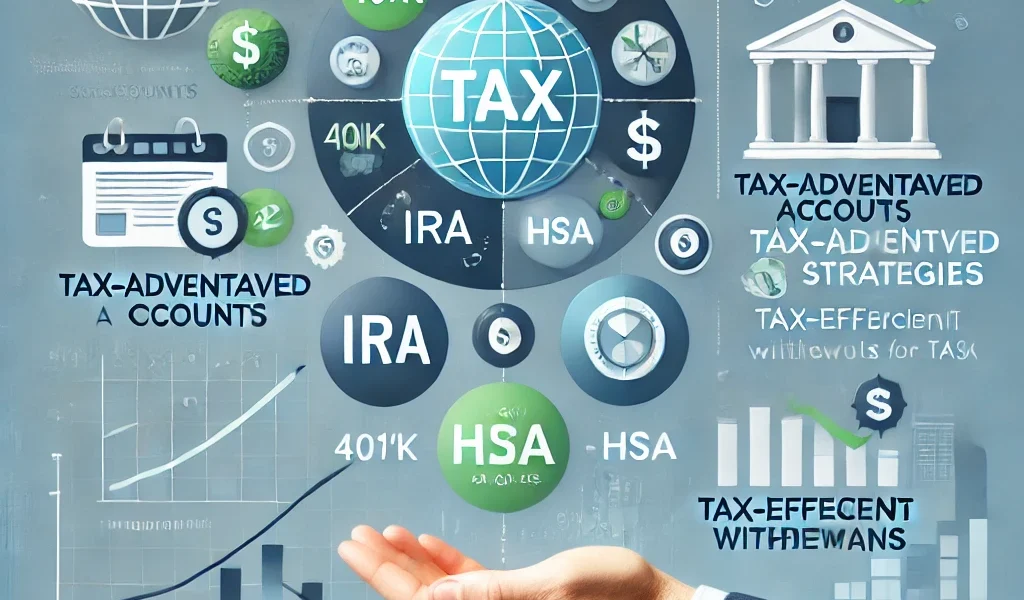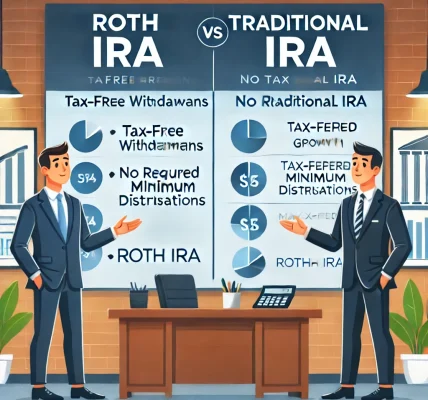Planning for retirement is about more than just saving money; it’s about saving smartly. Taxes can eat into your retirement savings if not managed properly. Implementing tax-saving strategies can help maximize your wealth and ensure a financially secure retirement. In this article, we explore the best tax-saving retirement strategies and analyze which ones offer the best returns.
Why Tax Planning is Crucial for Retirement
Taxes can significantly impact your retirement income. Without proper planning, you may end up paying more in taxes than necessary, reducing your overall returns. Here are some reasons why tax-saving strategies matter:
- Preserve More Wealth: Lower taxes mean more money stays in your retirement account.
- Ensure a Longer Retirement Fund: Efficient tax planning helps stretch your savings.
- Improve Investment Returns: Reducing tax liabilities can increase your net gains.
Top Tax-Saving Strategies for a Secure Retirement
1. Invest in Tax-Advantaged Retirement Accounts
Tax-advantaged accounts provide significant savings by reducing taxable income and allowing investments to grow tax-free or tax-deferred.
a. 401(k) and 403(b) Plans (For Employees)
- Contributions are tax-deductible, reducing taxable income.
- Employers often offer contribution matching (free money for retirement).
- Taxes are deferred until withdrawal, allowing investments to grow without yearly taxation.
b. Individual Retirement Accounts (IRAs)
- Traditional IRA: Contributions are tax-deductible, but withdrawals in retirement are taxed.
- Roth IRA: Contributions are made with after-tax income, but withdrawals (including gains) are tax-free in retirement.
- Best for individuals expecting a higher tax rate in retirement.
c. Self-Employed Retirement Accounts
- SEP IRA (Simplified Employee Pension) – Ideal for freelancers and small business owners.
- Solo 401(k) – Allows self-employed individuals to contribute both as an employer and employee, maximizing tax savings.
2. Maximize Health Savings Accounts (HSA)
An HSA is a powerful tax-saving tool if paired with a high-deductible health plan (HDHP).
- Contributions are tax-deductible.
- Earnings grow tax-free.
- Withdrawals for qualified medical expenses are tax-free.
- After age 65, funds can be withdrawn for any purpose without penalties (taxable if not used for healthcare).
3. Tax-Efficient Investment Strategies
Investing wisely can minimize tax burdens and maximize post-retirement returns.
a. Invest in Tax-Efficient Funds
- Index funds and ETFs (Exchange-Traded Funds) generally have lower capital gains distributions, reducing taxable events.
- Municipal bonds offer tax-free interest income, making them an excellent choice for retirees in higher tax brackets.
b. Utilize Capital Gains Tax Benefits
- Long-term capital gains (assets held for over a year) are taxed at lower rates than short-term gains.
- Holding investments longer reduces frequent taxation and enhances compounding growth.
c. Asset Location Strategy
- Tax-inefficient investments (bonds, REITs) should be held in tax-advantaged accounts (401(k), IRA) to defer taxes.
- Tax-efficient investments (stocks, ETFs) should be in taxable brokerage accounts to benefit from lower capital gains tax rates.
4. Strategic Retirement Withdrawal Planning
How and when you withdraw funds significantly impacts your tax liability.
a. Follow a Tax-Efficient Withdrawal Order
- Withdraw from taxable accounts first – Gains are taxed at a lower capital gains rate.
- Use tax-deferred accounts (Traditional 401(k), IRA) next – Withdrawals are taxed as ordinary income.
- Tap into Roth IRA last – Withdrawals are tax-free, making them ideal for later retirement years.
b. Implement Required Minimum Distributions (RMDs) Smartly
- Traditional IRAs and 401(k)s require withdrawals after age 73.
- Roth IRAs have no RMDs, allowing funds to grow tax-free longer.
- Converting some traditional retirement savings to a Roth IRA can reduce RMD burdens.
5. Roth IRA Conversions
- Converting a Traditional IRA or 401(k) into a Roth IRA involves paying taxes now in exchange for tax-free withdrawals later.
- Best for individuals expecting higher tax rates in retirement.
- Ideal to do during years of lower income to minimize immediate tax impact.
6. Take Advantage of Tax Credits for Retirees
Certain tax credits can further reduce your tax liability in retirement:
- Saver’s Credit: Available to low-to-moderate-income individuals who contribute to retirement accounts.
- Credit for the Elderly or Disabled: May apply based on age and income level.
7. Estate Planning to Reduce Tax Burden
Proper estate planning can help heirs inherit more of your wealth by reducing estate taxes.
- Gifting Strategy: You can gift up to a certain amount annually to beneficiaries without tax implications.
- Charitable Contributions: Donations to charities can reduce taxable income.
- Trusts: Setting up specific types of trusts can protect assets and reduce tax burdens.
Which Strategy Offers the Best Returns?
| Strategy | Tax Benefit | Best For |
|---|---|---|
| 401(k) Contributions | Tax-deferred growth & employer match | Employees |
| Roth IRA | Tax-free withdrawals | Middle to high-income earners expecting higher future taxes |
| HSA | Triple tax benefits | Those with high medical expenses & HDHP |
| Tax-Efficient Investing | Lower tax on gains | Retirees & long-term investors |
| Roth Conversions | Reduces future taxes | Those in a lower tax bracket now |
Final Thoughts
The best tax-saving strategy for a secure retirement depends on your income, retirement goals, and tax bracket. Maximizing contributions to tax-advantaged accounts, investing in tax-efficient funds, and strategically withdrawing funds can significantly reduce tax burdens and enhance retirement returns.
Start planning early to take advantage of these tax-saving strategies and ensure a financially secure and comfortable retirement!




